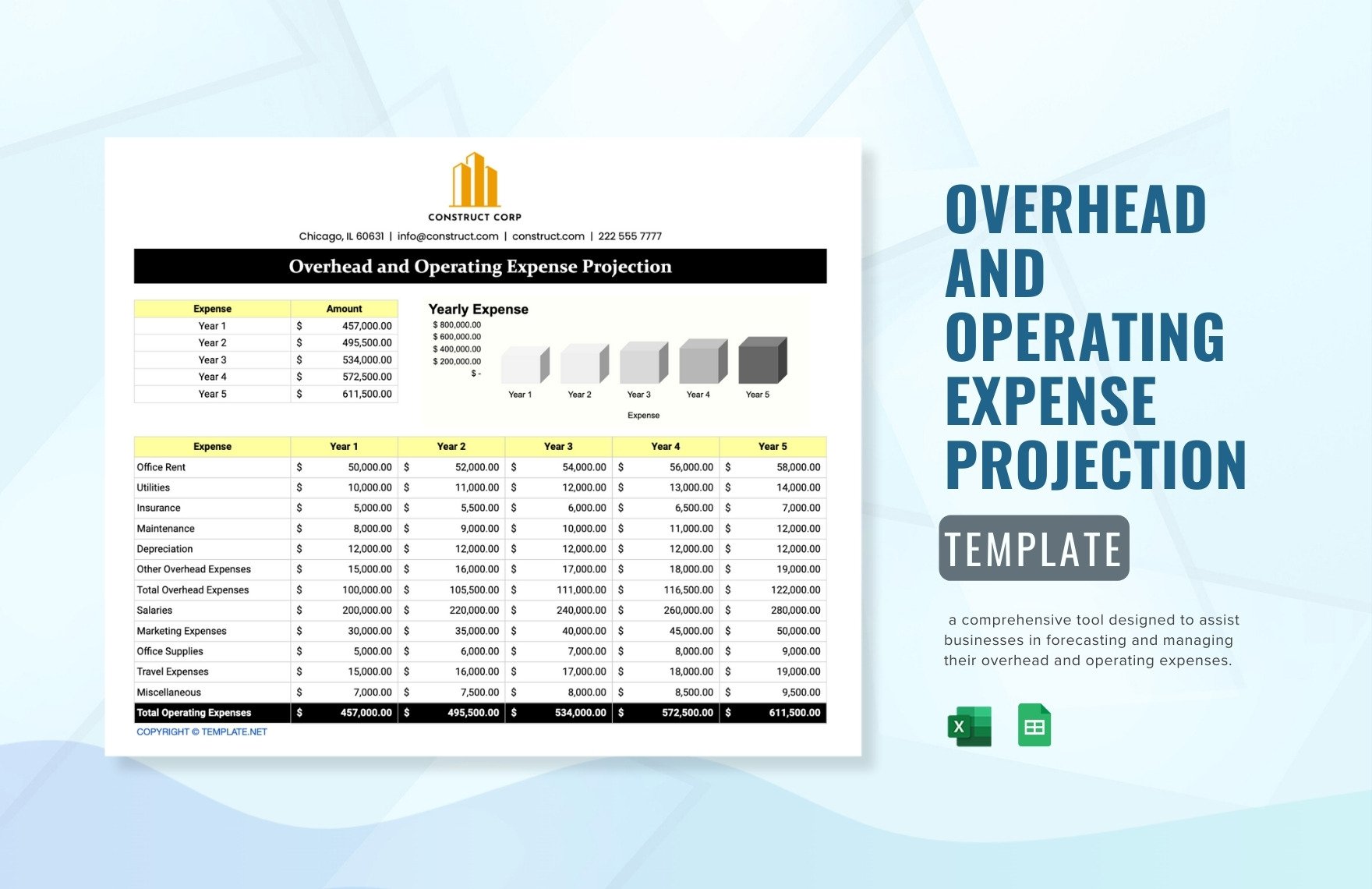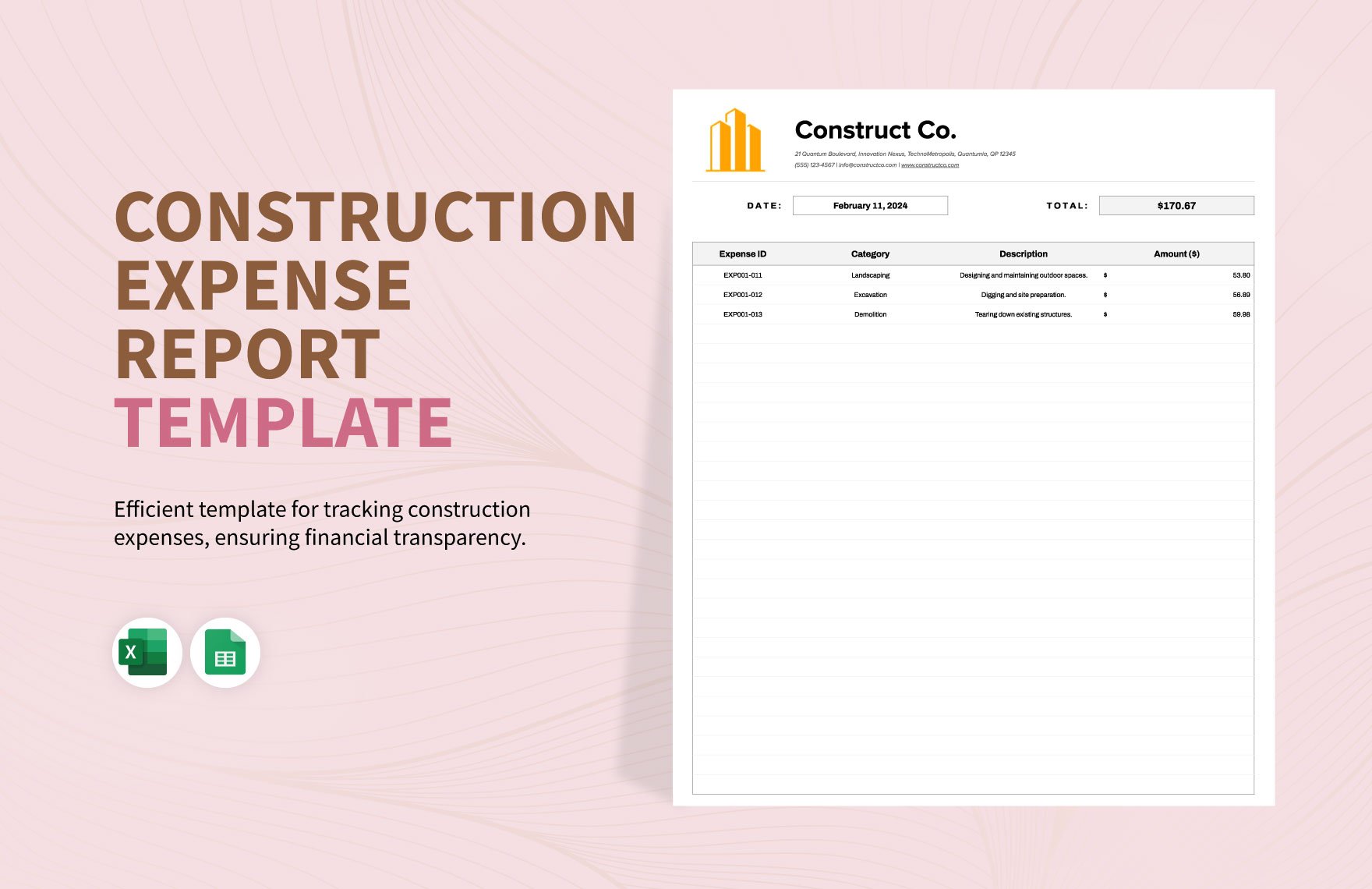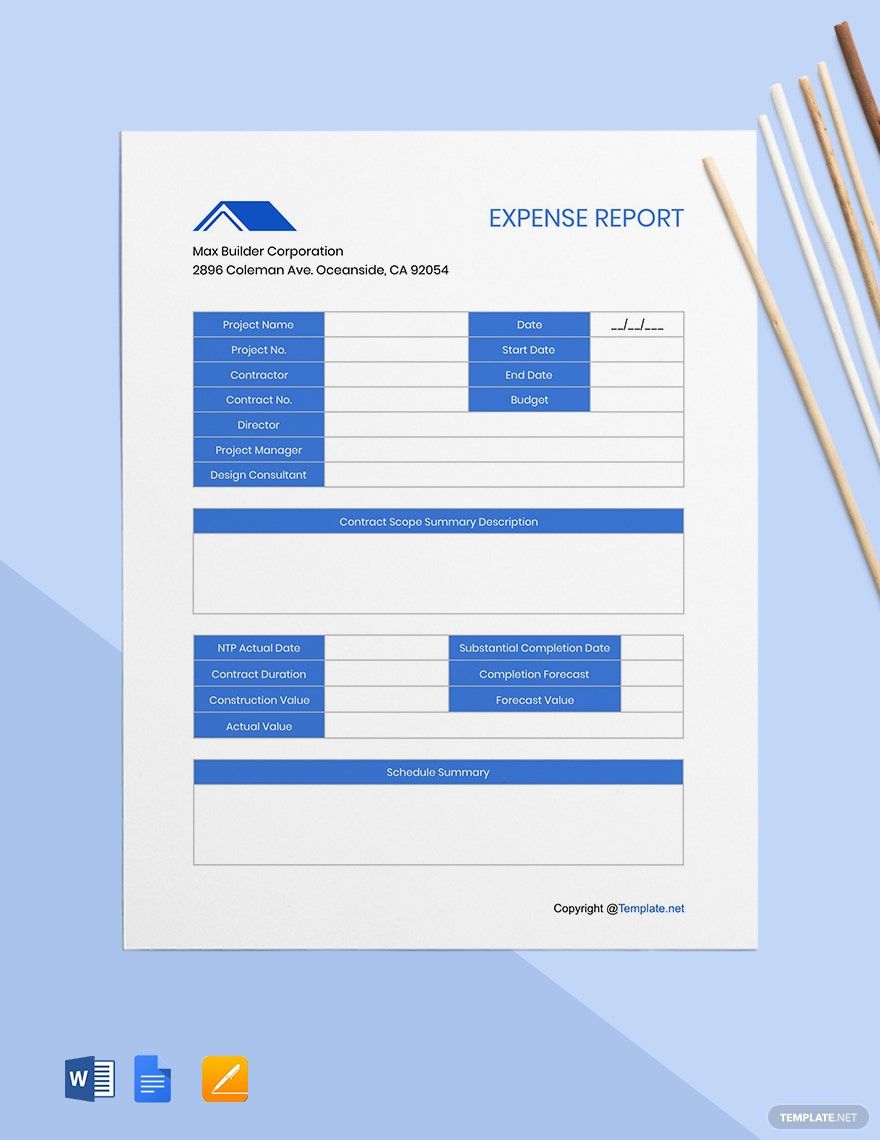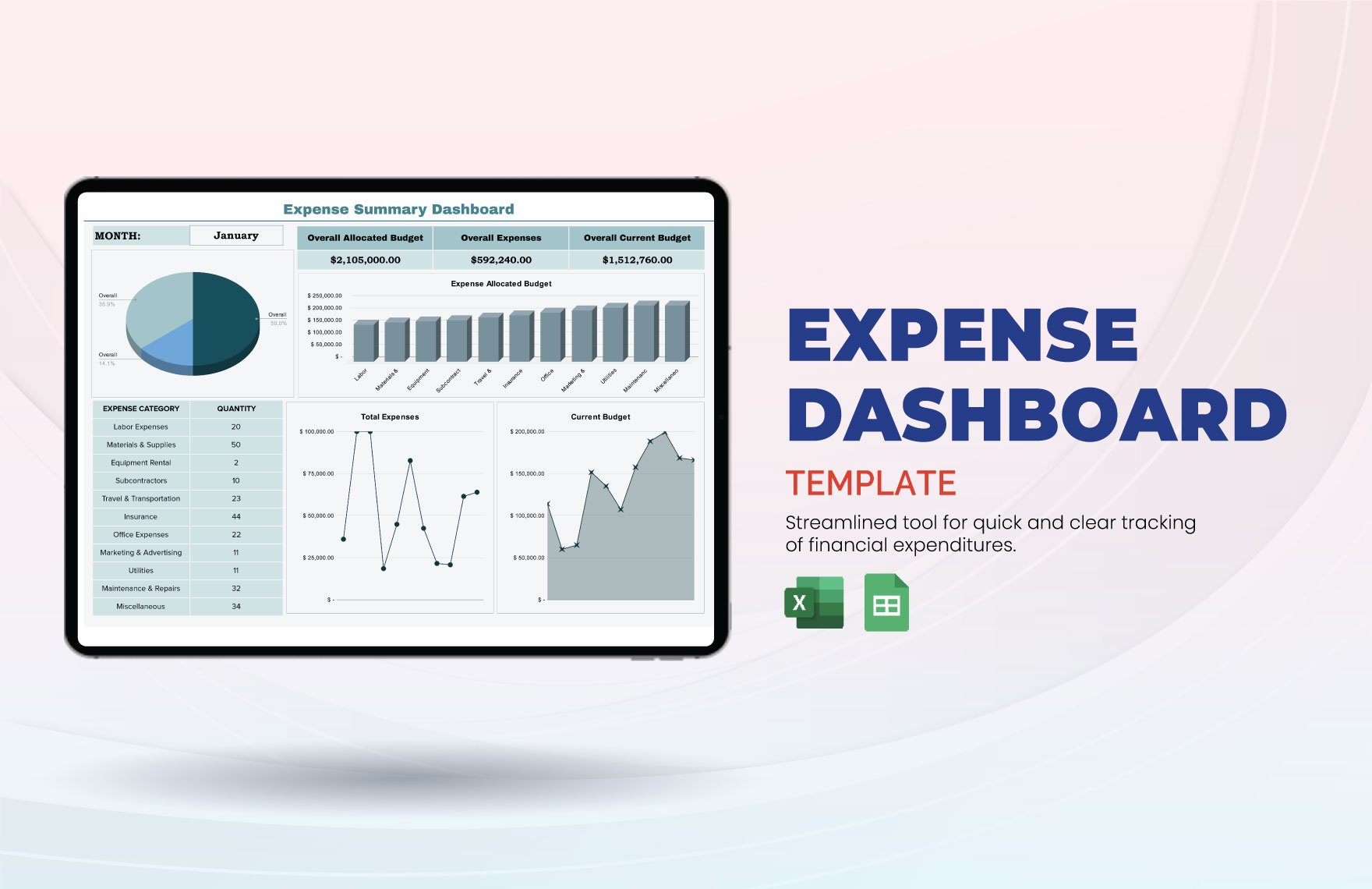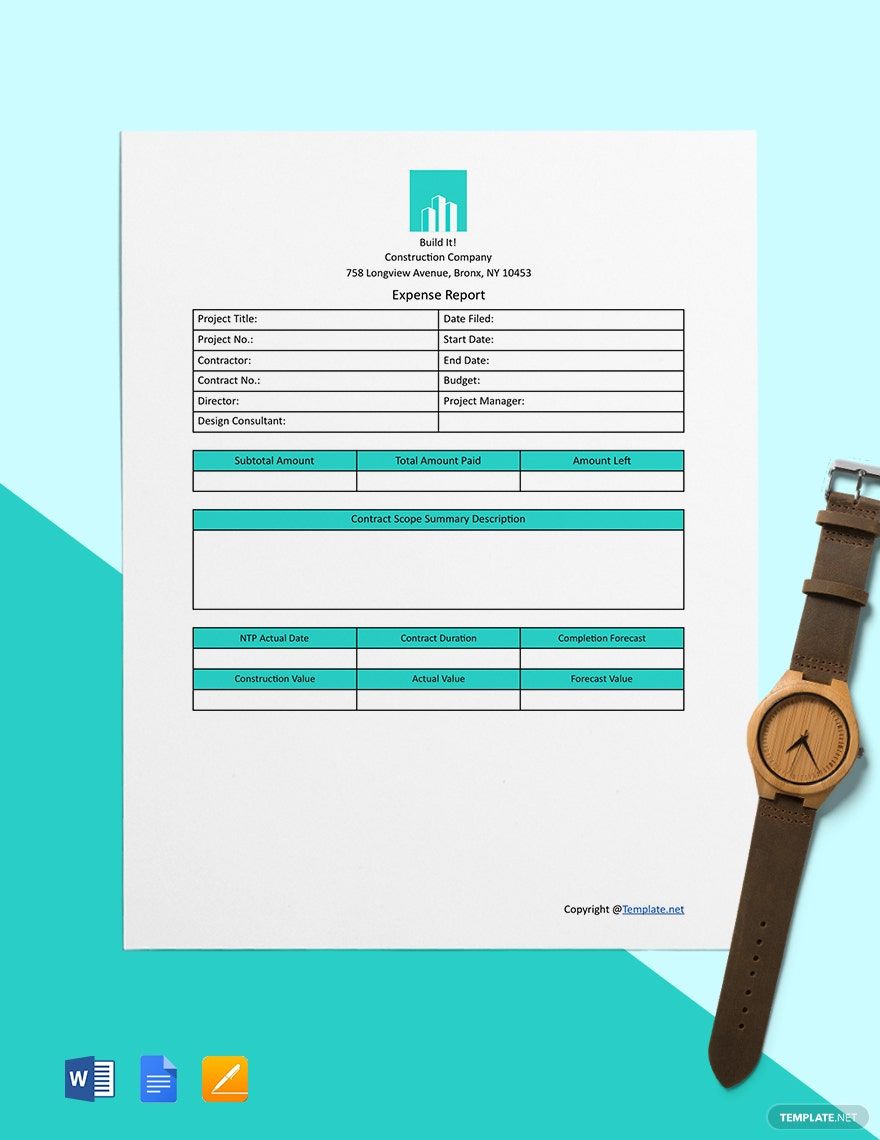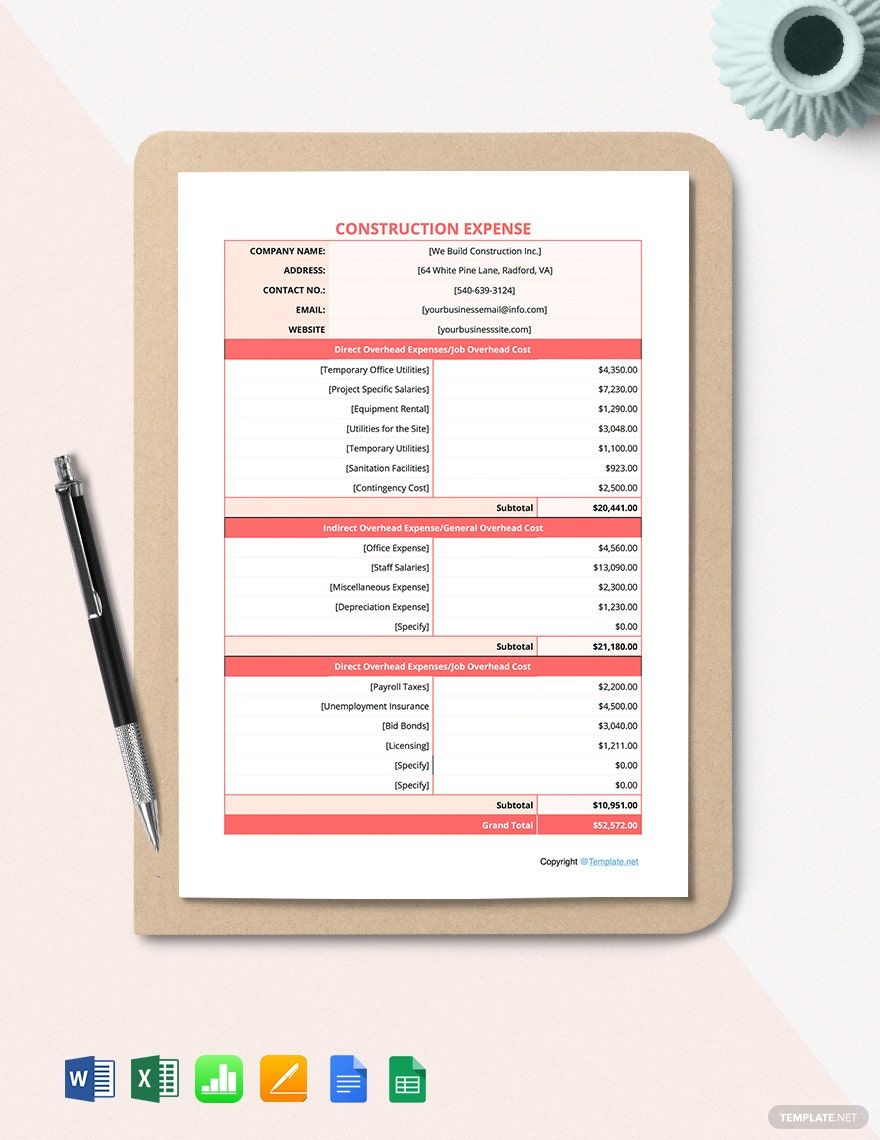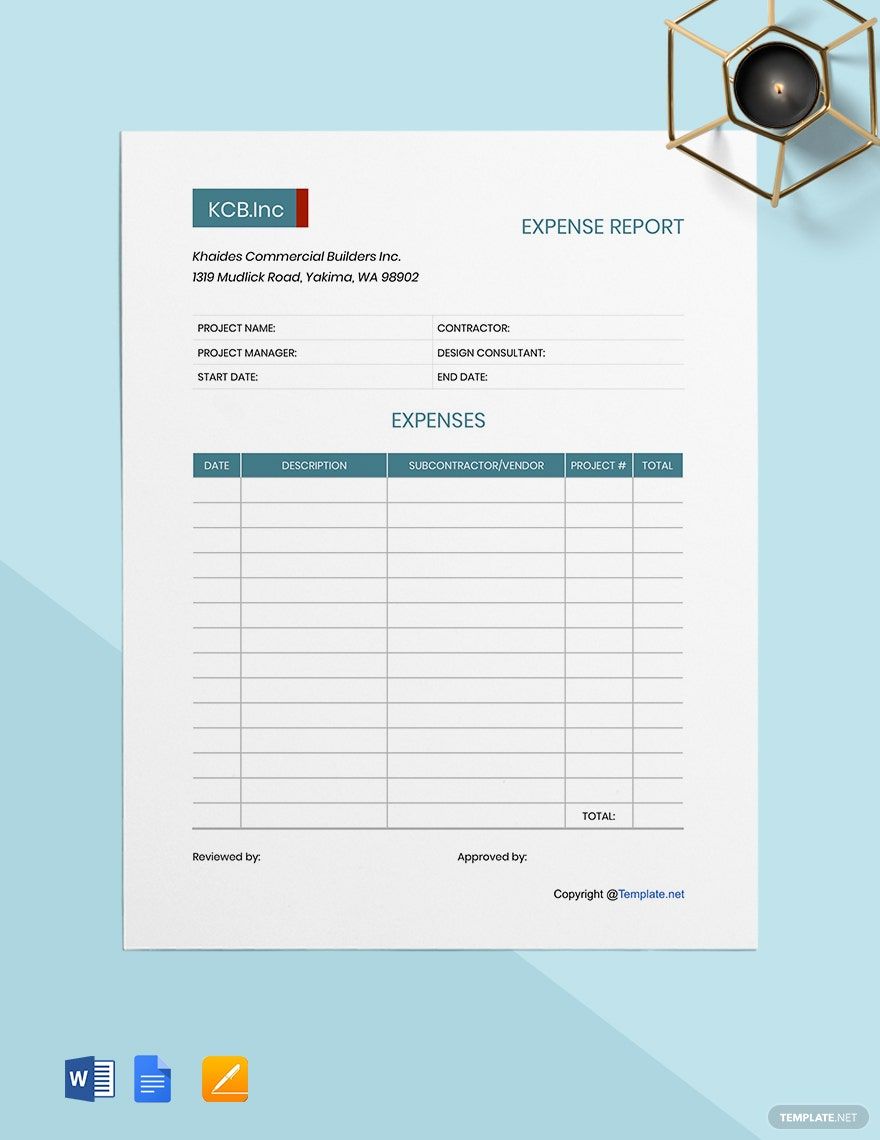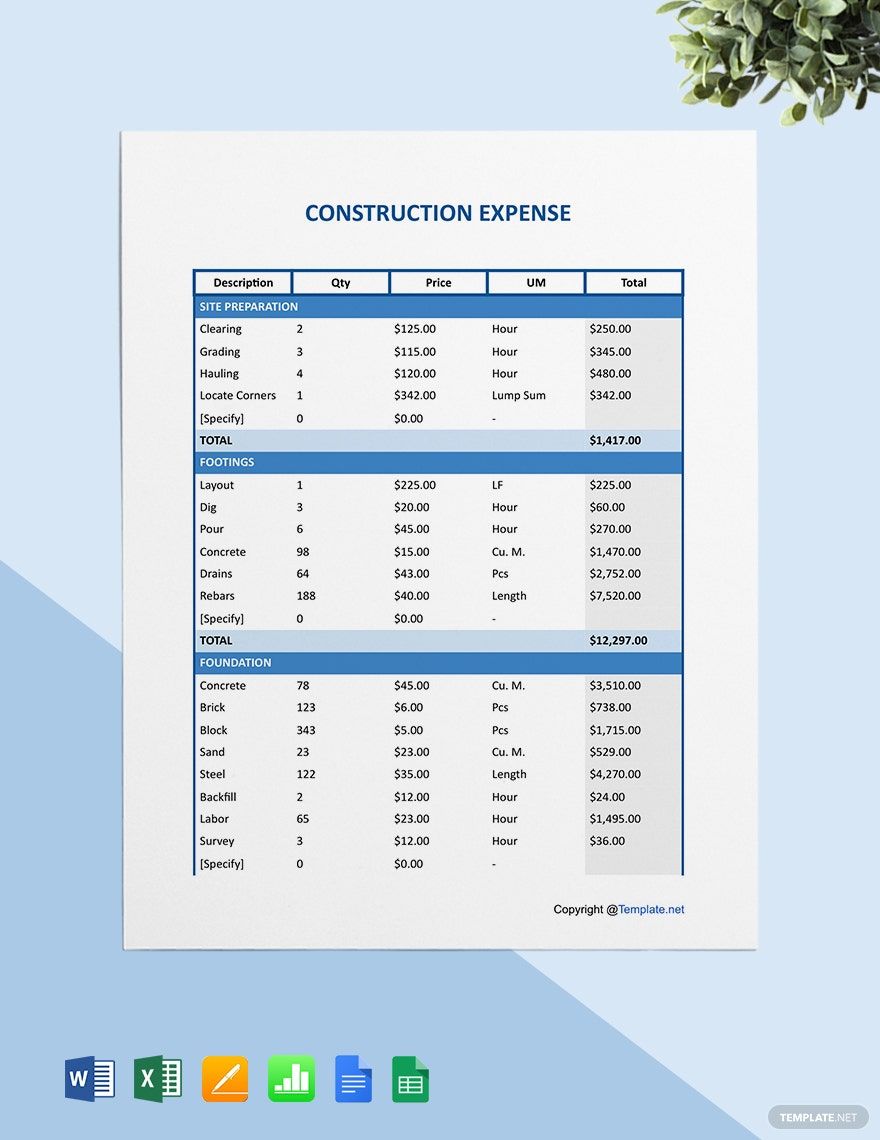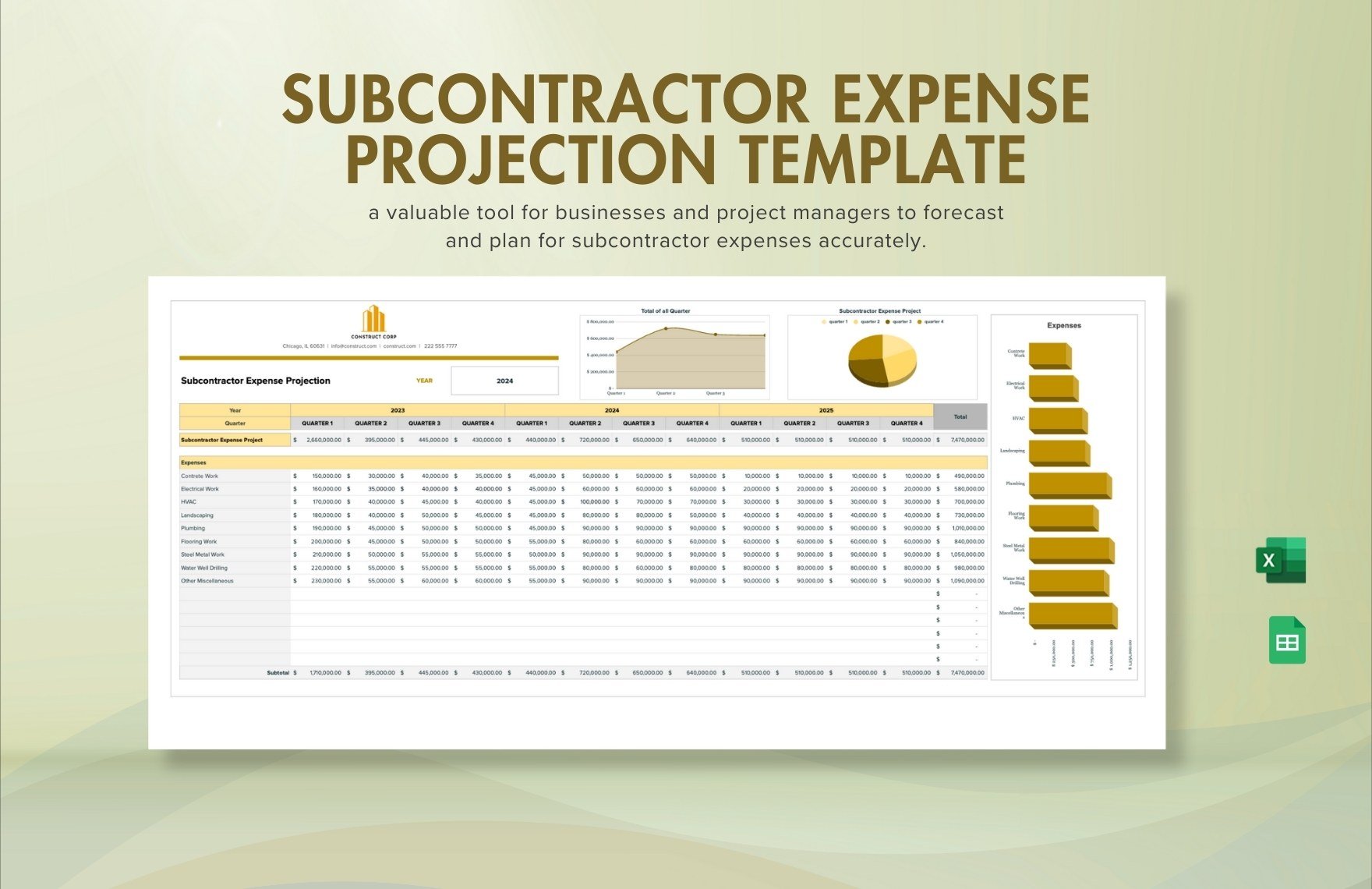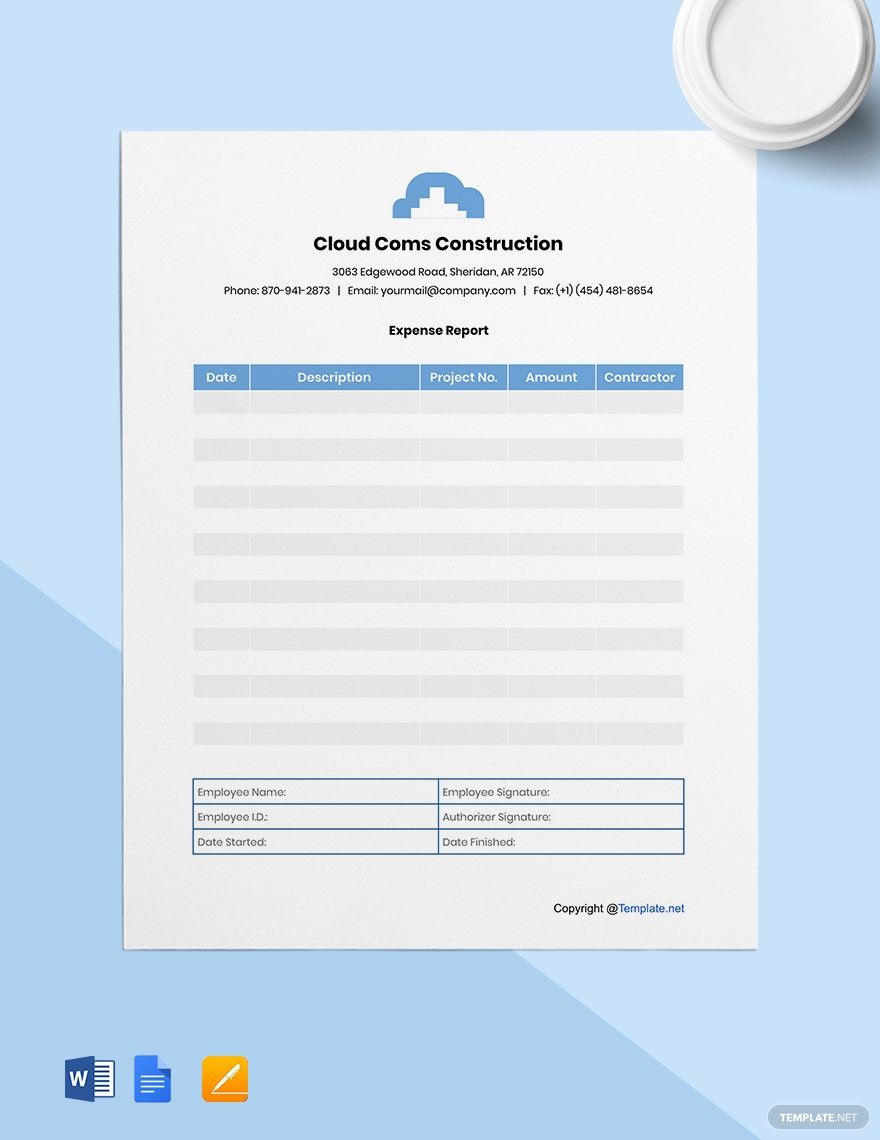Whether you are a client or a builder, transparency when it comes to money is essential. The budget could link up to different instances of delays, errors, and shortcomings when overlooked. And as the construction industry is gaining its full potential, it’s typical for the demand to rise. So, to compete and gain the trust of more clients, lay all the expenses in a formal document. We help you go through the process with our ready-made, and high-quality Construction Expense Templates you download and print copies in (US) 8.5x11 or (A4) 8.7x11.69 Inches + Bleed. Adjust the structure using Word, Google Docs, and Pages. Now, avoid exceeding the total budget. Prepare the expenses with the right tool. Download our Construction Templates now!
What is Construction Expense?
A construction expense is a summary that contains vital information regarding the costs collected for construction requirements. This includes equipment, labor, and services. Generally, it serves as a business construction expense report typically written down in a formal document.
How to Make a Construction Expense
The Seattle Times asserted an increasing percentage of 0.6% in the total expenses in building houses and establishments during 2019. Dealing with money is confidential for every business. Supposed money could provide ease in acquiring resources, but it’s different in the construction industry and perhaps, in other sectors, too. A formal document must present the cost estimate and accounting summary of a particular project. It creates transparency between the company and its clients. That is why, for bookkeeping purposes, create a construction expense for an informative report. Below are steps you can follow through.
1. Determine Accurate Expense Summary
Construction cost becomes complicated in the long run. To avoid issues with inaccuracy, always start by collecting the construction estimates. Here, the proper listing of materials, labor, taxes, and services expenses must be determined. So, draft all of them in an empty sheet. Transfer all the data collected by proceeding to the next step.
2. Construct a Table
Before you complete the content, forming the table would be appropriate. In this way, you can follow the proper organization of details. With that said, choose the right application to start with. Remember, you can have three pages at most. In your document, form a table with an accurate size. You may or may not leave a space right above it for the company summary. Now, separate different variables by splitting the table into rows and columns. This is important for the proper segregation of elements.
3. Indicate Proper Title Headings
Complete your work by adding the titles for each column and row. A project estimate typically includes the material type, date of payment, methods, and overall building expenses. Highlight each variable by changing the background color. Doing this enables accountants and the rest of the members to review the process correctly.
4. Jot Down the Materials, Pricing, and Fluctuations
Finish a construction report by supplying the content. Tally the collected data in your sheet. Place individual information on its designated boxes. Make sure to provide an exact amount when doing so. Be precise in jotting down the labor, scope, utilities, and equipment. Other than that, use an easy to read font style. As a common rule, be consistent. Secure that all the information added aligns well with a common goal.
For the summary right above each table, indicate the office address, date prepared, and the logo. This adds quality to your formal document.
5. Keep It Neat and Professional
Neatness is imperative for every business estimate format. So, keep the dominant color white. Avoid putting design elements, such as images and symbols. In the end, always review before printing. Check the organization, preciseness, and accuracy of every variable and the whole output. Once done, consider sending a soft copy for approval. Then, if given the signal, print enough copies for transparency.


